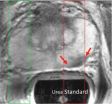(Press-News.org) The research was led by Dr. Matthew Ellinwood, a veterinarian and animal science professor at Iowa State University, in collaboration with Dr. Patricia Dickson at the Harbor-UCLA Medical Center, with colleagues at the Iowa State College of Veterinary Medicine, the University of Tennessee, St. Louis University and the University of Pennsylvania. Their work was published in the AAAS journal Science Translational Medicine.
The research focused on a disorder called mucopolysaccharidosis type I, or MPS I, which is caused by the lack of a key enzyme that breaks down substances the body needs to help build normal nerves, bone, cartilage, tendons, corneas, skin and connective tissue.
The researchers demonstrated that beginning replacement of the enzyme shortly after birth prevented irreversible damage caused by the disease. Previous studies on older subjects were only able to reduce MPS I symptoms with enzyme replacement therapy. Especially important was the prevention of clinical signs of brain, heart and bone disease.
"This study, for the first time, outlines the potential to fully treat mucopolysaccharidosis type I using current technology and medicines, and prevent what might otherwise be the fatal or seriously debilitating consequence of this inherited disease," Ellinwood said.
"This study will strengthen the need and demand for neo-natal screening for this rare disorder. Overall, we feel our discoveries outline tremendous improvements for the treatment of these sorts of rare genetic disorders generally and for the treatment of MPS I specifically," said Ellinwood, who has been studying the disease for 12 years in dogs, which also suffer from the disorder.
His past work helped identify a genetic mutation that led to a DNA testing program for the Schipperke dog breed that has for all practical purposes eliminated the disease.
There is no cure for severe forms of MPS I and similar disorders, which are collectively known as lysosomal storage diseases. Symptoms include clouding of eye corneas, skeletal deformities, heart valve disease and severe cognitive impairment and decline.
The research opens the door to improved methods of enzyme delivery in human patients with similar genetic disorders. It also suggests that babies could be tested for MPS I at the same time they are tested for other inherited diseases to determine if they need the enzyme replacement therapy.
"There is a test under development to identify children with MPS I at birth, allowing them access to treatment when it could do the most good. Currently, diagnosis is usually made after clinical signs of disease have already begun, and the rarity of the condition makes pre-natal diagnosis impractical," Ellinwood said.
MPS and related diseases are hereditary and almost without exception they are recessive, with a child receiving one mutant copy of the gene from each parent. Due to the recessive nature of the disease parents are unaffected, and have no way of knowing if they are carriers.
INFORMATION:
More information on these often fatal disorders is available from the National MPS Society Inc. website (http://www.mpssociety.org). The occurrence of MPS and related diseases in the general population is thought to be one in 25,000 births. The broader group of lysosomal storage diseases may occur as often as one in every 5,000 births.
More information about Ellinwood's work is available at: http://www.iastate.edu/Inside/2005/0415/ellinwood.shtml.
END
November 30, 2010 -- Despite the existence of effective programs for treating alcohol dependencies and disorders, less than a quarter of people who are diagnosed actually seek treatment. In a recent study by Columbia University's Mailman School of Public Health researchers report that people diagnosed with alcoholism at some point in their lifetime were more than 60% less likely to seek treatment if they believed they would be stigmatized once their status is known.
This is the first study to address the underuse of alcohol services specifically with regard to alcohol-related ...
###
Gold, L., et al. (2010). “Aptamer-based multiplexed proteomic technology for biomarker discovery,” PLoS One. Available online at http://dx.plos.org/10.1371/journal.pone.0015004
Ostroff, R. et al. (2010). “Unlocking biomarker discovery: Large scale application of aptamer proteomic technology for early detection of lung cancer.” PLoS One. Available online at http://dx.plos.org/10.1371/journal.pone.0015003
About SomaLogic, Inc.
SomaLogic, Inc., is a privately held biomarker discovery and clinical proteomics company based in Boulder, Colorado. The company's mission ...
A UCSF research collaboration with GE Healthcare has produced the first results in humans of a new technology that promises to rapidly assess the presence and aggressiveness of prostate tumors in real time, by imaging the tumor's metabolism.
This is the first time researchers have used this technology to conduct real-time metabolic imaging in human patients and represents a revolutionary approach to assessing the precise outlines of a tumor, its response to treatment and how quickly it is growing.
Data on the first four patients are being presented today at the Radiology ...
AMES, Iowa – Researchers from Iowa State University and the Ames Laboratory have developed a process capable of producing a thin and uniform light-absorbing layer on textured substrates that improves the efficiency of polymer solar cells by increasing light absorption.
"Our technology efficiently utilizes the light trapping scheme," said Sumit Chaudhary, an Iowa State assistant professor of electrical and computer engineering and an associate of the U.S. Department of Energy's Ames Laboratory. "And so solar cell efficiency improved by 20 percent."
Details of the fabrication ...
(Santa Barbara, Calif.) –– A ballet dancer grasps her partner's hand to connect for a pas de deux. Later that night, in the dark, she reaches for her calf to massage a sore spot. Her brain is using different "maps" to plan for each of these movements, according to a new study at UC Santa Barbara.
In preparing for each of these reaching movements, the same part of the dancer's brain is activated, but it uses a different map to specify the action, according to the research. Planning to hold hands is based on her visual map of space. Her second plan, to reach for her calf, ...
DENVER (December 2, 2010) – Fresh water and reusable energy. Humans are on a constant hunt for a sustainable supply of both. Water purification requires a lot of energy, while utility companies need large amounts of water for energy production. Their goal is to find a low-energy-required treatment technology. Researchers from the University of Colorado Denver College of Engineering and Applied Science may have discovered an answer.
Last year, a study published in Environmental Science & Technology incorporated desalination into microbial fuel cells, a new technology ...
Madrid, 2 december 2010.- Spanish Oncology has established a new standard treatment for Breast Cancer at early stages thanks to the results of the study 9805/Target 0 funded by Spanish Breast Cancer Research Group (GEICAM) and sponsored by Sanofi Aventis.
More than thousand patients and 50 hospitals participated in the study, whose findings are reported in the latest issue of The New England Journal of Medicine. Results indicate that docentaxel during quimotherapy reduces the risk of recurrence by 32% in women with high-risk but node-negative, early stage breast cancer ...
Agricultural – or Neolithic – economics replaced the Mesolithic social model of hunter-gathering in the Near East about 10,000 years ago. One of the most important socioeconomic changes in human history, this socioeconomic shift, known as the Neolithic transition, spread gradually across Europe until it slowed down when more northern latitudes were reached.
Research published today, Friday, 3 December 2010, in New Journal of Physics (co-owned by the Institute of Physics and the German Physical Society), details a physical model, which can potentially explain how the spreading ...
The use of androgen suppression therapy (AST) in prostate cancer for low-risk cases declined following a decrease in physician reimbursement, according to a study published online TK in The Journal of the National Cancer Institute. However, the indicated use of AST for metastatic disease in the palliative setting did not decline in the same period.
The use of AST in prostate cancer increased more than threefold between 1991 and 1999 both for patients with metastatic cancer and those with low-risk disease, but AST treatment in the latter group has not been shown to improve ...
Randomized phase III studies should be designed to find out whether a new drug or treatment makes a meaningful difference in patients' survival or quality of life, according to a commentary published online December 3rd in The Journal of the National Cancer Institute. Instead, most trials now are designed to detect a statistically significant difference between treatment and control groups, which may not be clinically meaningful, write Alberto Ocana, M.D., Ph.D. and Ian F. Tannock, M.D., Ph.D., of Princess Margaret Hospital in Toronto.
Regulatory agencies such as the ...

